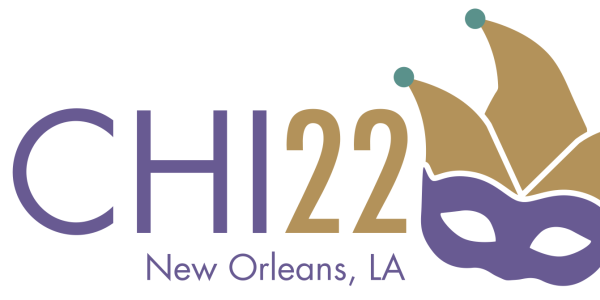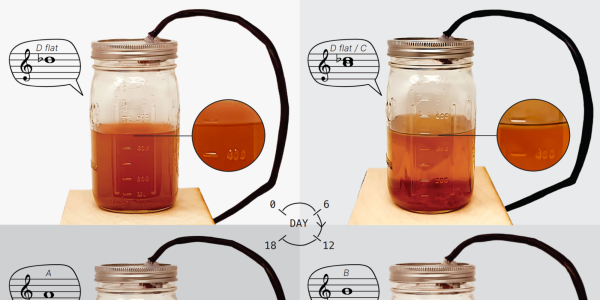
A group of CU Boulder artists and technologists, many of whom share connections with the ATLAS Institute, contributed to the Museum of Boulder’s newest exhibit, “Convivial Machines,” which opened Saturday, Oct. 30.
The gallery showcase is the first museum installation for Boulder Experiments in Art and Technology (B.E.A.T), says the exhibit's curator, Jiffer Harriman (ATLS PhD '16), who started B.E.A.T. in 2019 to “foster creativity and collaboration at the intersection of art and technology.” Museum visitors can expect to see a variety of interactive systems, including musical installations and video art, as well kinetic sculptures, digital games, bioluminescent algae and more, Harriman says.
“The exhibit highlights a local community of artists and creative technologists looking for new ways to see the world,” says Harriman. “It explores the differences and balance between what people do well—expressiveness and creativity—and what machines are good at–repetition and connection.”
One of the emerging themes of the show is the tension between the benefits that technology offers and the negative impacts, Harriman says. Some installations imagine new possibilities, while others point toward technology’s negative effects, including an installation of "useless boxes" that contain a single switch, which when turned on, is immediately switched off by a robotic finger, he adds.
The ATLAS Connection
Inspired by bioluminescent algae and the idea of engaging with something “live,” Harriman has blended research led by Mirela Alistar, assistant professor of computer science with the ATLAS Institute, into the installation. Alistar, also the director of the Living Matter Lab, and Netta Ofer, an ATLAS master’s student, have created an exhibit, “Bioluminescent Touch,” where visitors can interact in the darkness with dinoflagellates, algae that produce light when exposed to oxygen through physical stimulation.
“The bioluminescent response to human touch creates unexpected connection and empathy with the microorganism, drawing us into the wonder of communicating and interacting with nonhuman beings,” Ofer says.
Slaton Spangler, now a software engineer with LASP who, as an undergraduate majoring in computer science was a very active member of the BTU Lab, made the interactive installation, “Amorphous Breeze.” The piece displays a network of undulating “blobs” that fade in and out following a set of underlying rules. When a viewer presses a glowing green button, a fan in the real world appears to blow away the blobs, replacing them with new blobs that follow new rules. The patterns that emerge from the waves of blobs tend to be mesmerizing in the same fashion as a lava lamp, Spangler says.
Spangler also constructed the installation, “Clear the Void,” which uses an XBox Kinect to create an interactive space of digital images provided by Matt Corones, an ATLAS master's student (Creative Industries) in the ACME Lab, Dajira Medić, Jeanne Kipke, Andy DiLallo and Shannon Derthick.
In a third installation, Spangler created a hardware platform to loop an installation of video art from the B.E.A.T. community that includes a range of experimental techniques and themes.
What: "Convivial Machines," an exhibit by Boulder Experiments in Art and Technology (B.E.A.T), including many artists and technologists from the ATLAS community.
When: Oct. 30–Feb. 6, 2022
Where: Museum of Boulder, 2205 Broadway, Boulder
Cost: adults $10; seniors, college students, youth (5-17) $8; under 5–free.
Priyanka Makin, an ATLAS master's student, fabricated the “Nature Mobile,” a kinetic sculpture of nature shapes that explores the future relationship between technology, engineering, art and nature. Makin used a laser cutter to cut the pieces and built and programmed the motor. With the help of natural sunlight in the lobby, the sculpture scatters colors throughout the entry to the museum.
Perry Owens, an undergraduate CTD student and member of the ACME Lab, created the sculpture, "The Future of Problem Solving," which expresses the duality between man and machine as they are tasked with solving a puzzle. To succeed, man and machine must achieve harmony through trust and coordination. Owens made the "human" from resin casts of his own hands. Using a 3D modeling software, he designed the mechanical arms and 3D printed them with fingers that can be posed. He also 3D printed the Rubik's cube, which can be rotated, and added a wooden exterior, while the LED-lined portals and mirrors were laser-cut.
"I imagine the future of our world is one in which there is collaboration between technology and humanity, instead of competition and war," Owens says. "This piece was fabricated using human skills combined with technology, akin to its message of unity between man and machine."
A collaborative effort of seven created the musical arcade, “Galaga's Ghost,” a multi-channel musical instrument that up to six people can play with buttons, joysticks and air guitar moves. The interactive musical composition was created by Sean Winters, a CMCI lecturer in the Department of Critical Media Practices who performs regularly in the ATLAS Black Box. Winters is also on the B2 advisory committee. Torin Hopkins, a PhD student in the ACME Lab and the instructor for the SOUND class, helped design the interface layout and assisted with the final fabrication of the piece.





